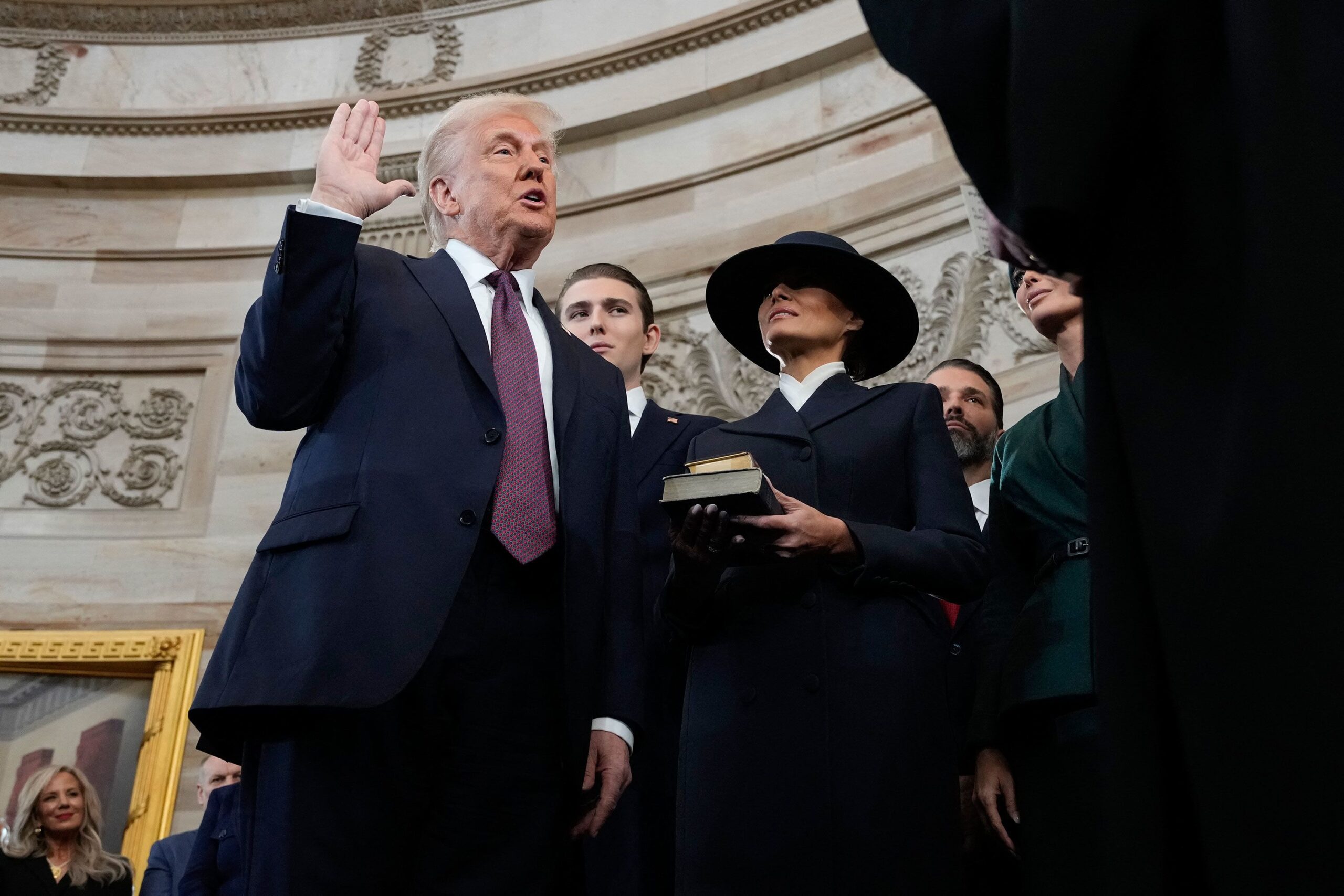Photo: Morry Gash/Pool/AFP/Getty Images
On Monday, January 20, 2025, Donald Trump was sworn in as the 47th President of the United States of America. His administration started implementing his foreign policy agenda from the moment he was sworn into office. Throughout his 2024 presidential campaign, Trump often talked about how he intended to use his time in office to shift the American approach to foreign policy. Two months after he was sworn into office, he has taken action on foreign policy goals through multiple executive orders and tariffs.
On Day 1 of his presidency, Trump signed multiple executive orders relating to American foreign policy. Trump signed an executive order withdrawing the United States from the World Health Organization. He also signed an executive order titled “Putting America First in International Environmental Agreements,” which removed the United States from the Paris Climate Agreement and shifted the environmental policy focus to a more domestic approach. In the order, Trump states that “it is the policy of my Administration to put the interests of the United States and the American people first in the development and negotiation of any international agreements with the potential to damage or stifle the American economy.” Trump issued a similar executive order to implement his “America First Policy” in international affairs. The order, titled “America First Policy Directive to the Secretary of State,” simply directs the Secretary of State to put the United States “in line with an America First foreign policy.”
Trump’s decision to implement tariffs on some of the United States’ biggest trading partners has been a top headline in the early days of his presidency. He imposed a 10% tariff on all goods that come from China, to which Chinese officials responded by announcing plans to implement tariffs on the United States. Trump also planned to implement tariffs on Mexico and Canada in the beginning of his presidency, but they were paused in early days when the nations’ governments reached agreements on border security and drug trafficking. In return for a 30 day pause on tariffs, the Canadian government agreed to work with the United States to combat drugs and crime. Mexico entered a similar agreement with the Trump administration to work with the United States on drug trafficking and immigration at the U.S.-Mexico border in exchange for a pause on tariffs. Trump has stated that he believes these tariffs will implement fairness in trading practices. Defending the tariffs, Trump said that “there will always be a little short-term interruption. I don’t think it’s going to be big, but the countries and companies that have been ripping us aren’t particularly happy with what I’m doing.” After the 30 days were up, Trump placed a 25% tariff on all goods from both Canada and Mexico. However, after several discussions with leaders from the two countries, Trump issued a temporary tariff exemption on all goods included under the USMCA trade agreement.
Trump has also claimed an interest in buying Greenland, citing economic and military benefits. Greenland, a territory of Denmark, is a vast landmass in the middle of the Arctic Ocean with many resources and multiple American military bases. Trump stated that “I think Greenland we’ll get because it has to do with freedom of the world.” However, Danish Prime Minister Mette Fredriksen has said that she is not willing to give up the territory unless voters in Greenland choose independence on their own.
